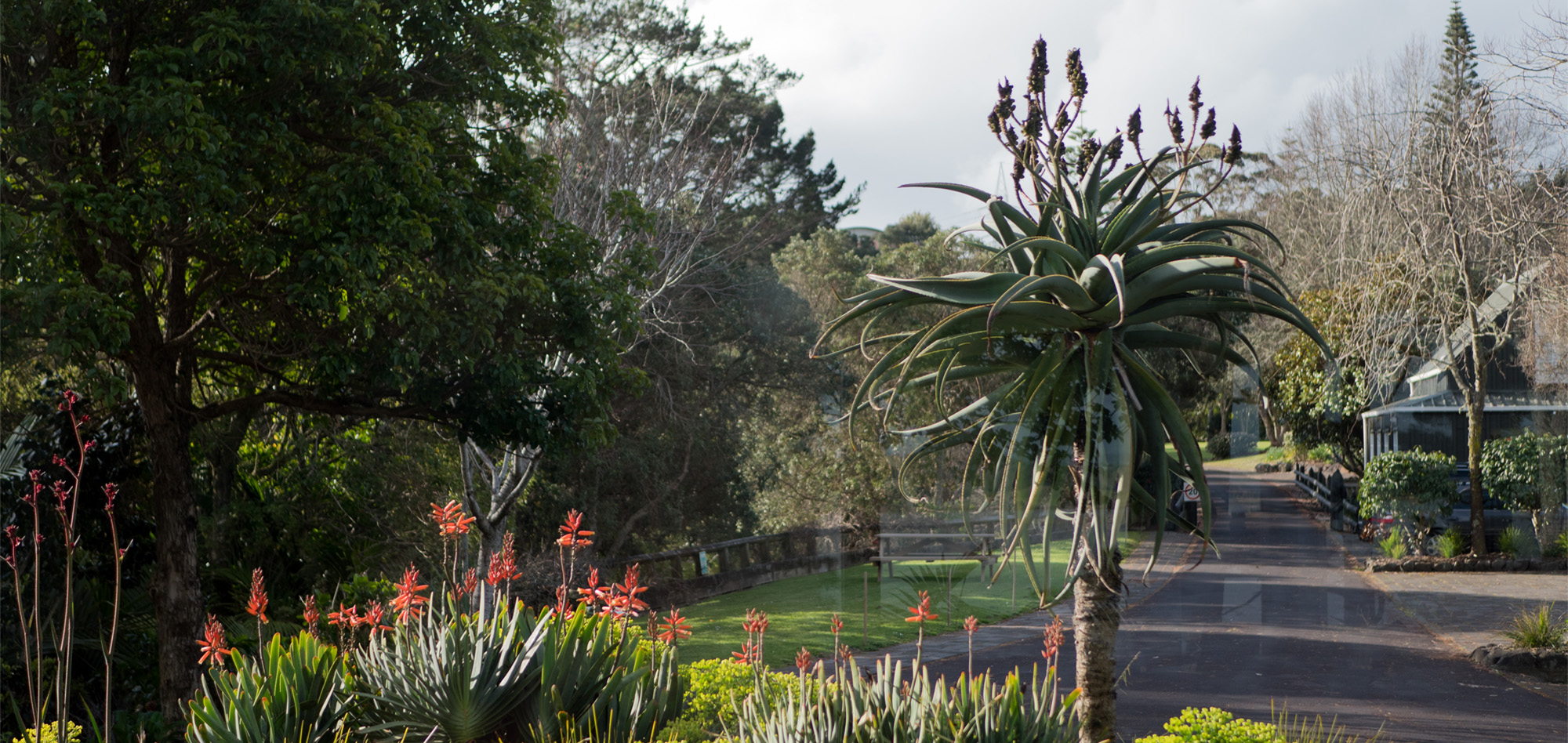
17 Sep Dune Aloe
This poem was occasioned by banter with Venn colleague Luke Fenwick. At some point in a boisterous exchange, he challenged me in an off-hand way to write a poem about the ‘tree’ that stands in the middle of the turnaround in front of the main house at Cape Horn, where Venn Foundation is based. The challenge appealed to me: a chance to play in language while practicing the discipline of paying attention to the world, its sheer givenness, the glorious ordinary. Other poets I admire–Kathleen Jamie, Seamus Heaney, Christian Wiman, Les Murray–have written stunning poems of attention, love songs in language to the world that says to us, day in, day out: ‘Behold!’; ‘Look!’ Challenge accepted.
Of all the languaged arts, poetry is the one best suited to this task. The essay, with its single focus and unspooling wind of argument, can attend brilliantly; but the genre is more limited in its modes of address, in the ways it can invite us to relate to the world. More playful, more lithe, more bent on getting inside a thing, poetry invites a livelier attention to this good world. ‘Look!’ says the world. ‘Oh!’ replies poetry.
The first beholder of things was the Lord God, who made the heavens and the earth. And what he beheld was the goodness of what he had made. In this way, our beholding is a work of love, attending to the distinct instance of life before us, here and now. It’s a habit that helps us to apprehend what’s been the case since the Creator’s first beholding: that this creation is made good.
Knowing this, I don’t need to co-opt this tree, this scene, this person to serve as a metaphor for my emotions (although this is a well-established and sometimes needful path in poetry!); rather, I can learn to look with love at God’s good earth as it is.
And many goods follow: I slow down, I get perspective, I am filled with wonder, I’m strangely grateful for things that stand quite apart from my needs or wants. I find myself praising God without any thought of benefit.
‘Whatever is true,’ writes Paul in his letter to the Church at Philippi, ‘whatever is noble, whatever is right, whatever is lovely, whatever is admirable—if anything is excellent or praiseworthy—think about such things.’
Turns out the ‘tree’ is a giant succulent. Some people call it a dune aloe.
I suggest you read the poem and listen to the recording, then track through the photos by Melody Cooper–these images capture the tree in different lights across different days.
Dune Aloe
Not so much dances in as registers the breeze,
tips scribing the unruled leaves of the morning:
mega-spirograph of the air, dune aloe.
Great star-burst of succulence,
plenty-tongued pentecostalist,
your inflorescence—showy racemes,
that is, corn-cobbing teasels of bee—
compose a sun-struck menorah
set at the side of each day’s altar:
big ups to the royal waste of time!
Gnarly, scab-kneed monopod
in that aggressive, totally pointed tutu,
you resist any dressed-up analogy:
carbonated, chlorophyllous waterspout;
singular reaching; firework moment.

